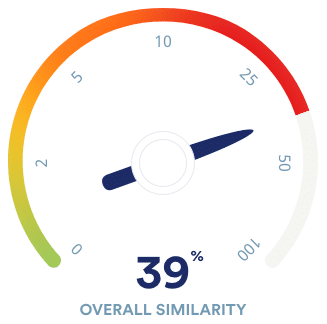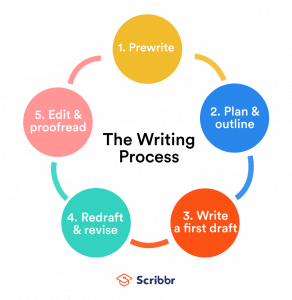
After you write your first draft, refine and proofread your work to make sure you fix all grammatical and spelling errors. You can use a tool like Grammarly when you do this to have fresh “eyes” looking at your work, but don’t rely solely on software—always review your work at least once yourself or have another (human) do it!
One common structure for an essay is the Five-Paragraph Essay, with the following parts:
When editing, pay attention to the words you use: remove all unnecessary words and work on using strong verbs in place of weak ones.
Some questions you can ask yourself to find a good topic include:
7. Edit your work.
High school students are frequently tasked with writing essays, which also play a big role in the college admissions process. But they’re not alone: professionals taking exams like the IELTS or LSATs also need to know how to write clear, concise, and persuasive essays.
You can use the Mind Map method to brainstorm connecting ideas, or you can also just jot down bullet points as you encounter them in your research.
Sometimes, you will already have an assigned essay type or topic, so that will save you one step. If these were not assigned to you, you have to think of possible topics that you can write on. This will also help determine the type of essay you will be writing.
- Narrative Essay: The narrative essay shares information in the form of a story and from a clearly defined point of view.
- Expository Essay: This type of essay explains, illustrates, or clarifies a topic. This also includes instructional pieces with step-by-step directions.
- Descriptive Essay: Descriptive essays do exactly what their name implies: they describe an event, phenomenon, or any other subject in detail.
- Persuasive Essay: This type of essay aims to convince the audience to adapt a certain perspective or idea.
- Compare and Contrast Essay: This type of writing pinpoints how similar or different two or more things are from one another.
- Problem-Solution Essay: This essay highlights an issue, influences the reader to care about it, suggests a solution, and tackles possible objections.

For writing a perfect essay conclusion, provide a futuristic overview and persuade your reader about your point of view and restate the thesis statement.
A perfect thesis statement has two parts. The first part states the topic and the latter states the main point of the essay.
If you are given the topic, skip to the next step, create an outline and start the writing process.
- Write a clear topic sentence
- Provide solid evidence to support your argumen
- Provide examples
- Make sure the paragraph information is consistent
- Use transitions between paragraphs
- Conclude each paragraph by linking the evidence to your main point
Compose Body Paragraphs
Most of the students are not aware of the essential steps to write an essay. Read on and master how to write an essay on any topic that is well-researched, detailed and tailored for an A grade.
Also, make sure that the topic you choose has sufficient research material available. Search either on the internet or in books for the topic you have chosen to write on.
To learn how to write an essay introduction, you first need all the necessary information required to tell the reader about the main idea of your essay.
The main aim of body paragraphs is to support your thesis by presenting evidence, facts and figures, statistics, quotes, examples, and other strong evidence.

Understanding the question is the first step, but it is equally important that you make efficient use of the available time. Students often underestimate the amount of work required to write a good essay, which results in two things: (1) late nights at the library, and (2) a disappointing grade. If you want to achieve a good mark, you should start planning your essay the moment you receive the essay question. The following table may be a useful aid:
Paraphrase: Unlike economic capital, the amassing of which requires some conscious effort, cultural capital can be built simply by existing and consuming (Bourdieu, 1986).
This essay explores the role of cultural capital in the consumption of art, and the impact of cultural capital on consumers’ perception of artistic expressions.
If you are asked to evaluate the usefulness of something, however, you don’t necessarily need to go into as much critical depth. Yes, you should still acknowledge alternative approaches, and yes, you should still note some strengths and weaknesses – but the bulk of the work must emphasise the concepts practical usefulness. Perhaps the best approach is to find one, or a few, case studies where the theory has been used – what was the outcome of this? Does the application of the theory reveal any particular shortcomings, or strengths?
2. Plan and schedule

Properly citing the sources upon which you draw also ensures that you will not be accused of plagiarism, which is a serious offence in academia. In fact, repeated and grievous plagiarism can lead to the suspension of your studies at the majority of academic institutions!
“Compare and contrast” essays, meanwhile, are essentially a hybrid of the above – you need to take a critical approach and evaluate the literature, but your focus has to remain solidly on the theories that you have been asked to compare and contrast. It is important to show that you understand both (or all) core theories in great depth, both on a theoretical and applied level.
This may, at the face of it, sound like somewhat banal advice – but fact of the matter is that failing to properly understand the question set is one of, if not the most common reason behind a disappointing grade when it comes to essay writing. Are you being asked to critically evaluate something? Compare and contrast? Analyse a particular circumstance? Evaluate the usefulness of a particular concept?

- It gives your writing direction and focus.
- It gives the reader a concise summary of your main point.
A good introduction paragraph is an essential part of any academic essay. It sets up your argument and tells the reader what to expect.
The length of each part depends on the length and complexity of your essay.
- An opening hook to catch the reader’s attention.
- Relevant background information that the reader needs to know.
- A thesis statement that presents your main point or argument.
More examples of essay introductions
The spread of the internet has had a world-changing effect, not least on the world of education. The use of the internet in academic contexts is on the rise, and its role in learning is hotly debated. For many teachers who did not grow up with this technology, its effects seem alarming and potentially harmful. This concern, while understandable, is misguided. The negatives of internet use are outweighed by its critical benefits for students and educators—as a uniquely comprehensive and accessible information source
As you research and write, your argument might change focus or direction as you learn more.
The structure of an essay is divided into an introduction that presents your topic and thesis statement, a body containing your in-depth analysis and arguments, and a conclusion wrapping up your ideas.
Everything in the introduction is relevant to the main body of the essay.

If you have to come up with your own topic for an assignment, think of what you’ve covered in class—is there a particular area that intrigued, interested, or even confused you? Topics that left you with additional questions are perfect, as these are questions you can explore in your writing.
- Grammatical errors.
- Ambiguous phrasings.
- Redundancy and repetition.
It’s best to leave your work alone for at least a day or two after completing the first draft. Come back after a break to evaluate it with fresh eyes
Editing focuses on local concerns like clarity and sentence structure. Proofreading involves reading the text closely to remove typos and ensure stylistic consistency.
Table of contents
Additionally, you will probably be provided with specific guidelines for issues related to format (how your text is presented on the page) and citations (how you acknowledge your sources). Always follow these instructions carefully.
Narrow down your idea to a specific argument or question. For example, an appropriate topic for an essay might be narrowed down like this:
Now it’s time to look critically at your first draft and find potential areas for improvement. Redrafting means substantially adding or removing content, while revising involves making changes to structure and reformulating arguments.
